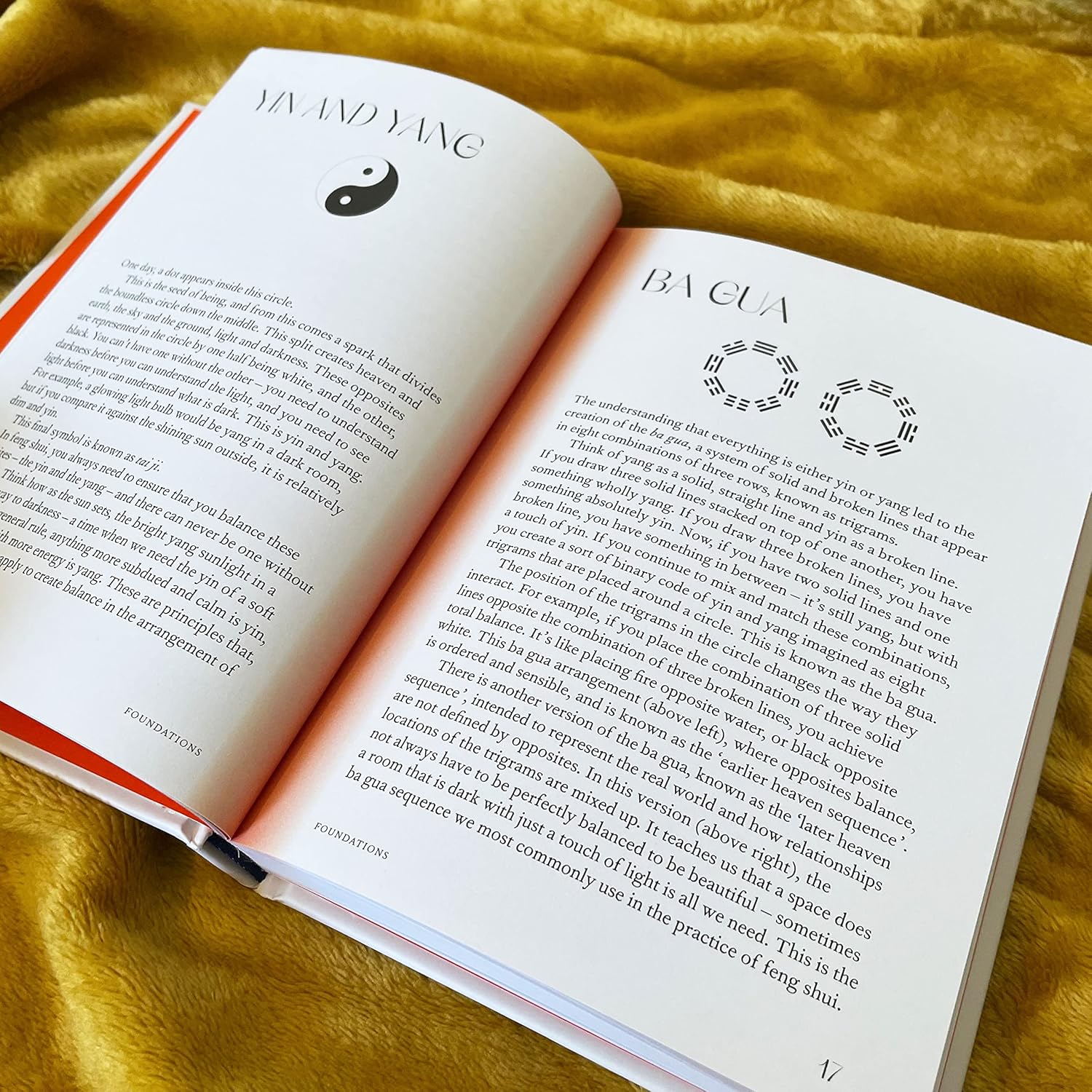The bedroom is our sanctuary where we shed fatigue and recharge. In feng shui, it is the most vital space for nurturing energy within the home, directly influencing residents’ sleep quality, physical health, emotional relationships, and personal fortune. A well-designed bedroom feng shui layout helps us absorb positive energy and elevate our quality of life. Below, we delve into the taboos and best practices of bedroom feng shui.
Part One: Core Principles—The Foundation of Bedroom Feng Shui
Before delving into specifics, grasp the three fundamental principles of bedroom feng shui:
- Harness Energy: The bedroom requires a stable, tranquil energy field, avoiding direct drafts or overly chaotic airflow.
- Yin-Yang Balance: Sleep is associated with “stillness” and “yin.” The bedroom should cultivate a quiet, gentle, and warm atmosphere, avoiding excessive ‘dynamic’ and “yang” elements that cause disturbance.
- Human-Centered Approach: The ultimate purpose of feng shui is to serve people. All layouts should prioritize ensuring the occupant’s sense of security, comfort, and physical and mental well-being.
Part Two: Eight Major Bedroom Feng Shui Taboos and Remedies
These taboos are distilled from the wisdom of our ancestors, and many align with modern psychology and environmental science.
1. Taboo One: Bed Facing the Door or a Mirror
▪ Why it’s undesirable: A bed facing the door is called “door clash” in feng shui. It creates a sense of insecurity, disturbs sleep, and the direct flow of air can be detrimental to health. A bed facing a mirror, especially at night, can startle the half-asleep mind with its reflections, causing restlessness.
▪ Solutions:
‣ Rearrange the bed to avoid a direct line with the door.
‣ If moving the bed is impossible, place a screen or a heavy, floor-length curtain between the door and the bed.
‣️ Avoid placing mirrors directly opposite the bed; install them inside wardrobes or use only when needed.
2. Taboo Two: Overhead Beams
▪ Why it’s problematic: Beams (or large chandeliers) above the bed create intense pressure, as if weighed down by heavy objects. Feng shui believes this affects residents’ health and fortune, particularly causing headaches and insomnia.
▪ Solutions:
‣ The fundamental solution is to relocate the bed to avoid the beam’s direct path.
‣ Install a suspended ceiling during renovation to conceal the beam.
‣ Alternatively, mount wall sconces on either side of the beam. The upward-directed light energy can counteract the downward pressure.
3. Taboo Three: Bedhead Without Support (Suspended)
▪ Why it’s problematic: A headboard facing a window or suspended in mid-air signifies “no backing.” This subconsciously creates feelings of instability and insecurity, negatively impacting sleep quality and career prospects.
▪ Solutions:
‣ Ensure the headboard rests firmly against a solid wall, symbolizing “having a backing” for stable support.
‣ If the headboard faces a window, use thick curtains for coverage and consider placing small green plants on the windowsill to stabilize the energy field.
4. Taboo Four: Excessive Clutter in the Bedroom
▪ Why it’s problematic: Accumulated clutter and old items create stagnant energy, blocking the flow of fresh vitality. A chaotic environment also disrupts mental clarity, making relaxation difficult.
▪ Solutions:
‣ Practice the “declutter and let go” principle by regularly clearing unnecessary items.
‣ Choose wardrobes and storage cabinets with doors to “hide” clutter, maintaining a clean and open space.
5. Taboo Five: Excessive Electronics
▪ Why it’s problematic: Televisions, computers, phones, and other electronics emit electromagnetic radiation and generate excessive “fire” energy, disrupting the bedroom’s essential tranquil “yin” energy field. This can negatively impact sleep and marital harmony.
▪ Remedies:
‣ Avoid placing large appliances like TVs or treadmills in the bedroom.
‣ Keep phone chargers away from the bedside. Switch wireless devices to airplane mode or remove them from the bedroom before sleep.
6. Taboo Six: Bathroom Door Facing the Bed
▪ Why it’s problematic: The bathroom is a place for waste disposal, carrying heavy dampness and impure energy. When the door directly faces the bed, these negative energies can directly impact the human body, adversely affecting health.
▪ Remedies:
‣ Keep the bathroom door closed and install an exhaust fan to maintain dryness and cleanliness.
‣ Place a curtain at the bathroom doorway.
‣ Position tall green plants between the bedroom and bathroom to purify the energy field.
7. Taboo Seven: Excessively Bright or Dim Lighting
▪ Why it’s problematic: Excessive light (especially western exposure) can overstimulate yang energy in the bedroom, causing restlessness and irritability. Conversely, dim lighting fosters excessive yin energy, leading to lethargy and low spirits.
▪ Remedies:
‣ Use double curtains: sheer curtains during the day to filter soft natural light, and thick curtains at night to ensure darkness for better sleep.
‣ Employ warm-toned, dimmable lighting to create a cozy ambiance.
8. Taboo Eight: Displaying Prickly Plants or Artificial Flowers
▪ Why it’s problematic: Prickly plants like cacti and roses carry “sharp energy” in feng shui, potentially sparking verbal conflicts. Artificial flowers, lacking vitality, symbolize “insincere feelings” or “decaying energy.”
▪ Remedies:
‣ Opt for green plants with rounded, fleshy leaves like rubber plants, monstera, or snake plants. These purify air and bring vitality.
‣ High-quality silk flowers may substitute, but small fresh blooms or water-based plants are preferable.

Part Three: Creating an Ideal Feng Shui Bedroom—What to Do?
Having understood the taboos, let’s explore positive layouts:
1. The Bed is Central:
▪ Optimal Position: Headboard against a solid wall, with clear pathways on both sides for easy access and symbolizing balanced opportunities.
▪ View: From the bed, the door should be visible (but not directly facing) to enhance a sense of security.
2. Soft, Soothing Colors:
▪ Recommended primary hues include soft, warm tones like beige, pale yellow, light gray, light blue, and soft pink. These colors help relax the nerves and create a tranquil atmosphere. Avoid large areas of intense colors like bright red or black.
3. Emphasize natural materials:
▪ Prioritize cotton, linen, wood, bamboo, and other organic textures. Natural materials evoke warmth and relaxation, fostering a connection with nature’s energy.
4. Artwork and photographs:
▪ Display pieces that inspire joy and tranquility, such as landscapes or harmonious abstract art.
▪ For couples’ bedrooms, display warm photos of the two of you together to strengthen emotional bonds. Avoid hanging images of fierce beasts, weapons, or unsettling subjects.
5. Maintain Airflow and Freshness:
▪ Open windows regularly to let fresh air circulate. Use air purifiers or natural aromatherapy (like lavender or sandalwood) to cleanse the air and elevate energy.
Bedroom feng shui is not mystical superstition but a wisdom about harmonizing with your environment. It blends environmental psychology, architecture, and aesthetics. Ultimately, an ideal feng shui bedroom is one where you feel completely relaxed and at peace the moment you open the door. While following these basic principles, the most important thing is to listen to your own inner feelings, because your personal comfort and joy are the best feng shui.
